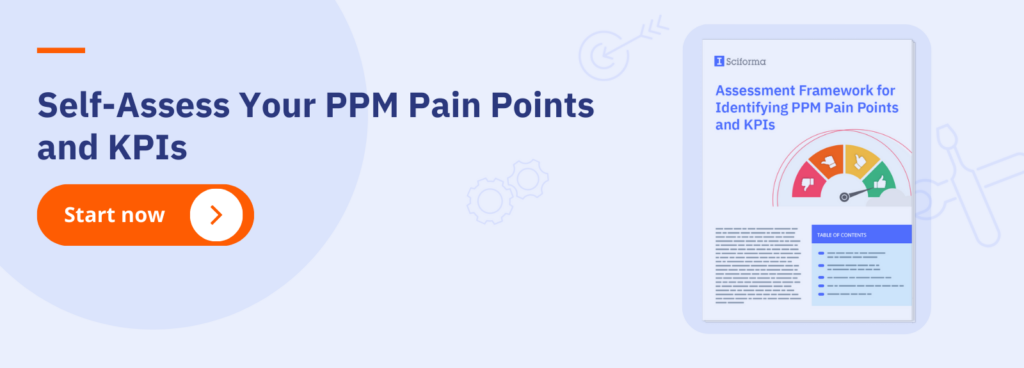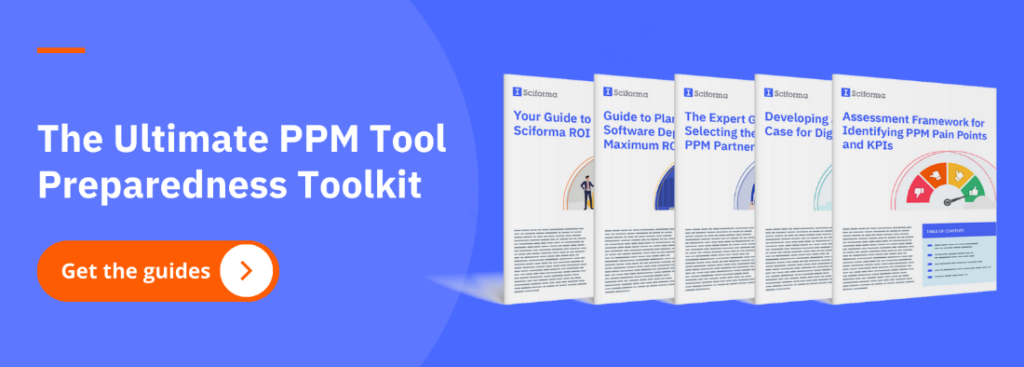Project Portfolio Management Strategy Guide
In today’s business landscape, project portfolio management (PPM) has become an increasingly crucial practice for project-oriented firms. For those businesses looking into the approach, this Project Portfolio Management Strategy Guide aims to clarify the difference between project and portfolio management, cover PPM basics like methodologies and capabilities, and offer insights into effectively implementing PPM. Serving as a valuable resource for project teams, leaders, PMOs, and executives, it addresses challenges, provides an overview of PPM tools, and introduces the next step — Enterprise Project Portfolio Management.
Table of Contents
- What is Project Portfolio Management (PPM)?
- The Difference Between Project and Portfolio Management
- Project Portfolio Management Basics: Methodologies and Capabilities
- Tips and Benefits of Implementing Project Portfolio Management
- Common Project Portfolio Management Challenges
- What is Enterprise Project Portfolio Management (EPPM)?
- PPM Tools to Empower Project Teams
Project Portfolio Management Tools to Empower Project Teams
Research shows that organizations that invest in project management and mature their PPM practices deliver stronger results. It’s no surprise that where you put your focus and attention is where you will excel!
Project Portfolio Management Assessment Tools
Organizations can leverage a number of tools, frameworks, and methods to further their PPM maturity.
PPM Maturity Assessment
A maturity assessment is a formal evaluation of the ability of a business to manage its project portfolios efficiently. It will consider all three types of PPM drivers: people, process, and technology.
Business Capability Assessment
A capability assessment is a standardized framework designed to evaluate the skills of both current and prospective employees. Organizations may conduct such diagnostics to identify their strengths and weaknesses. When properly implemented, this technique can have a tremendous positive impact on business success.
Stakeholder Mapping
This tool is designed to help project managers understand how various stakeholders are involved with a project. The goal is to figure out what they expect, and how to respond. It is a visual process charting anyone with a vested interest in the project and who might influence it.
Risk Matrix
A risk matrix provides a comprehensive vision of all risks affecting an organization or one of its initiatives. It therefore makes it possible to generate action plans to avoid their occurrence and mitigate their impact. Creating a matrix involves ranking factors based on both potential severity and probability to obtain an overall risk level for each.
Gantt
Gantt charts are project portfolio management tools designed to help project teams schedule and track their projects. A Gantt chart is a graphical depiction of a project schedule. It is a type of bar chart that shows the start and finish dates of several elements of a project, like milestones, tasks, and dependencies.
Kanban
Often viewed as a “competitor” to Gantt charts, Kanban is a management system which has gained huge traction in IT. It is also a visual method that shows progress at a glance: what is left to do, what is in progress, what is done. Kanban helps track progress, prioritize, and collaborate, and also prompts you to set priorities.
Identifying Key PPM Maturity Pain Points
Project Waste
Non-value-added work represents a much larger percentage of resource consumption than value-added work (up to 90%). Therefore, improving productivity for non-value-added tasks yields a much greater impact on overall project delivery productivity. If you focus only on the 10%, the math tells you that you are constrained to single-digit productivity improvements.
Project Cycle Time
Project Selection Quality
One bad investment decision can dramatically impact profitability and in some (extreme) cases represent an existential threat. Getting “business alignment” right is the most important project selection criteria.
The next step involves identifying the symptoms and root causes of the key pain point. For example, project waste often originates from a lack of automation of simple high-volume tasks.
Based on that analysis, organizations can determine how to close the gap between their current performance and their target maturity.
The Best Project Portfolio Management Tool: Sciforma
Frameworks and processes are not everything. To efficiently manage portfolios and increase the maturity of project teams, PPM professionals need the support of an intuitive and customizable software like Sciforma.
Sciforma is built to help organizations streamline the project portfolio management process wherever possible. With Sciforma, it’s never been easier to outline key performance goals, track project updates or progress, and communicate with all stakeholders in one place.
It’s time to rethink the way you approach project and portfolio management. Say goodbye to endless spreadsheets and messages or ideas lost to time. Move beyond project obstacles by accurately calculating and assessing risk levels, allocating resources efficiently, and creating standard troubleshooting processes.
No matter how you use Sciforma, your organization can revolutionize its project portfolio management approach with the help of our team and services. For more information about software selection criteria and methods, how to implement PPM tools, and how our PPM software works, download our software selection guide toolkit:






